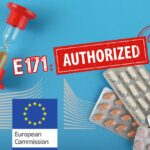
Nanos – role of French public authorities

Nanos – the role of public authorities in France, perspectives and shortcomings
By the AVICENN team – Last modification May 2024
After the tumultuous national public debate on nanotechnology of 2009-2010, the French government formulated several “commitments” concerning nanotechnologies and/or nanomaterials at the end of 20111See the interministerial communiqué presenting the Government’s “commitments” on the follow-up to the debate, drawn up on 27 October 2011 and communicated to the CNDP on 13 February 2012.
In addition to the implementation in 2013 of the mandatory declaration in the R-nano register of substances in the nanoparticulate state, risk assessment efforts have been partially implemented and should be persued by the various public or para-public organizations. At what rate? Are public authorities adequately fulfilling their role in protecting the population and the environment? Are they sufficiently empowered to withstand economic pressures? Risk prevention should be further strengthened.
Institutional stakeholders’ involvement in nanotechnologies
The ministries in charge of the 2009-2010 national public debate on nanotechnology
Ministries with varying degree of involvement in nano issues:
- It is mainly the Directorate General for Risk Prevention (DGPR) that is responsible for nano policies and more specifically the Chemicals Bureau of the Department of Environmental Health Risks, Waste and Diffuse Pollution.
- From 2022 onwards, the DREALs will carry out field inspections to verify compliance with the obligations to declare nanomaterials in REACH and in the French r-nano register.
- More information is available on the dedicated page of the Ministry of Ecological Transition: www.ecologie.gouv.fr/nanomateriaux.
- See also the 4th National Environmental Health Plan – Progress Report 2021-2022, Government, October 2022.
- The General Directorate for Competition, Consumer Affairs and Fraud Control (DGCCRF) is conducting controls on nanomaterials in cosmetics and food products (since 2017) and in textiles (since 2021):
- Nanomaterials in sunscreens: DGCCRF takes actions in order to improve implementation of European rules, DGCCRF, 17 novembre 2023
- Update of the information note on the definition of nanomaterials in cosmetics, DGCCRF, February 28, 2023
- 2021 controls on regulated substances in cosmetics: too many anomalies, DGCCRF, 14 December 2022
- Methodological note on the analysis of nanoparticles and the characterization of nanomaterials in consumer products, Common Laboratory Service (CLS), December 2, 2022
- Technical textiles: between innovation and overkill, DGCCRF, June 3, 2022
- Information note for the application of the definition of nanomaterials in the framework of the regulation (EC) n°1223/2009 on cosmetic products, DGCCRF & ANSM, July 5, 2021
- Nanomaterials in cosmetic products: the DGCCRF reports, DGCCRF, 22 February 2021
- Composition of cosmetics: the requirement of clear information for consumers, DGCCRF, October 15, 2019
> see also the 4th National Environmental Health Plan – Progress Report 2021-2022, Government, October 2022
- The General Directorate of Enterprises (DGE) is focused on supporting companies developing or using nanotechnologies.
No new information since 2021 on the dedicated page of the ministry’s website: https://travail-emploi.gouv.fr/…nanomateriaux
In the current Occupational Health Plan (PST 4 2021/2025), several actions concern nanomaterials:
- Action 2.1 aims to improve knowledge of occupational exposure and polyexposure to nanomaterials and conduct toxicological studies on their hazards and mechanisms of action according to the types of exposure (particularly dermal exposure).
- Action 10.2 plans to optimize the monitoring and surveillance of occupational risks (including EpiNano, epidemiological monitoring program for workers exposed to nanomaterials, on standby due to lack of companies willing to participate).
- In December 2017, the National Health Strategy 2018-2022 published by the Ministry of Solidarity and Health expressly mentions nanomaterials among the “emerging risks” and “new stressors”; it recommends acting on the sources of pollution and limiting our exposure, “relying on the precautionary principle where appropriate”.
- The previous official position of the Ministry of Health on nanomaterials or nanotechnologies dates back to the 2009-2010 national public debate.
The department’s dedicated page has not been updated since 2016: https://agriculture.gouv.fr/les-nanotechnologies-dans-lalimentation
Para-public organizations that support public decision-makers
- has published various bibliographical reviews and expert reports on the assessment of risks related to nanomaterials.
- is involved in the development of new methods for assessing the risks associated with nanomaterials.
- manages the declarations of the R-Nano register and makes recommendations for its development.
- supports the public authorities in responding to the consultation on the revision of the definition of the term nanomaterial.
- funds and contributes to research projects on nanos, in particular by leading the National Research Program Environment-Health-Work (PNR-EST).
- has been running a “Nanomaterials & Health” dialogue committee since 2012 in order to exchange with stakeholders (associations, unions, companies and industrial federations) information on the scientific work in progress, research needs, expectations and concerns of civil society (cf. the insert below).
> See also the 4th National Environmental Health Plan – Progress Report 2021-2022, Government, October 2022.
The LNE-Nanotech Institute benefits from more than 15 years of work on the metrology and characterization of nanomaterials, carried out by seven complementary research teams. The common objective is to develop the benchmark methods necessary to improve the quality and comparability of measurement data to support responsible innovation around nanotechnologies.
In 2022, LNE set up the NanoMesureFrance Center with France Chimie (chemicals lobby) and FEBEA (cosmetics lobby) to “better identify nanomaterials, better characterize their key physicochemical properties with regard to regulatory requirements, and assess nano-object emissions at various key stages in the life cycle of products as part of the risk analyses to be carried out”. By May 2023, NanoMesureFrance will have around 30 private-sector members.
Santé publique France is in charge of EpiNano, a French program for the epidemiological surveillance of workers exposed to manufactured nanomaterials.
Page on the institutional site: www.santepubliquefrance.fr/determinants-de-sante/exposition-a-des-agents-physiques/nanomateriaux.
See the institutional page www.inrs.fr/risques/nanomateriaux/ce-qu-il-faut-retenir.html
- Evaluation of the first three National Health-Environment Plans (PNSE 1, 2 and 3), HCSP, March 200 (to be published in June 2022)
- Assessment of knowledge on the effects of titanium dioxide (TiO2) nanoparticles on human health; characterization of population exposure and management measures, HCSP, April 2018 (made public in June 2018)
- Recommendation of vigilance relative to the safety of silver nanoparticles, HCSP, March 2010
- The safety of workers during exposure to carbon nanotubes, HCSP, January 2009
See the page https://www.ineris.fr/fr/recherche-appui/focus/nanomateriaux on the INERIS institutional website
- Regulatory assessment of nano-enabled health products in public health interest. Position of the scientific advisory board of the French National Agency for the Safety of Medicines and Health Products, Front. Public Health, 11, Oualikene-Gonin W et al., mars 2023.
- Information note for the application of the definition of nanomaterials in the framework of the regulation (EC) n°1223/2009 on cosmetic products, DGCCRF & ANSM, July 5, 2021.
- Assessment of cosmetic products inspections at ANSM, ANSM, Perfumes & Cosmetics Congress, November 4, 2020: ANSM presented the results of tests it had conducted in 2019 on 12 different brands of toothpastes, complementing the analyses conducted by the DGCCRF on 5 other toothpastes. Unfortunately, these results have not been made public outside of cosmetic brand conferences.
- A post-2017 ANSM report entitled “Nanomaterials in Drugs and Medical Devices”, written from 2017 but not dated, recommends, among other things:
- to improve the standardization and regulation for a better identification and evaluation of nanomedicines and medical devices
- to make changes to the R-nano register (converging with the demands of the precautionary and prevention stakeholders)
- increased involvement of ANSM on the subject.
- Recommendations for the toxicological evaluation of nanoparticulate drugs, Afssaps (now ANSM), October 2011.
- Recommendations for the use of titanium dioxide nanoparticles and
of zinc oxide as ultraviolet filters in cosmetic products, Afssaps (now ANSM), June 2011. - Biological evaluation of medical devices containing nanomaterials, Scientific report, Afssaps (now ANSM), February 2011.
- The CEA is a public research organization of a scientific, technical and industrial nature (EPIC).
- The activities of its Nanosafety Platform (PNS) aim to support CEA’s partners in health, safety and environmental prevention issues related to the use of nanomaterials or the unintentional release of nano-objects. It brings together a set of multidisciplinary skills applied to the entire life cycle of nanomaterials (manufacturing, integration, use and end of life including recycling).
- The “Molecular Systems and NanoMaterials for Energy and Health” (SyMMES) laboratory brings together multidisciplinary skills (physics, chemistry, biochemistry, biology) mobilized for research in the fields of nanotoxicology.
Commitments not always honored
The r-nano assessment
Although France was the first country to establish a register of “nanoparticulate substances” manufactured, imported or marketed in France, the results are far from what was envisaged during the Grenelle Environment Forum. As things stand, neither consumers nor health authorities are able to identify objects that contain nanomaterials or the risks that are possibly associated with them. As of June 2022, the 2020 assessment of the declarations of substances imported, manufactured or distributed in France in 2019 had still not been published, – almost two years late…
For several years now, AVICENN has been compiling a list of concrete recommendations to improve the access and the data of the r-nano register. At the end of 2020, Anses also published a severe diagnosis and strong recommendations to improve the r-nano register. We are waiting to see if, how and when these recommendations will be implemented. The onus is now on the Ministry of Ecological Transition.
What’s more, the public authorities have long been powerless to monitor the implementation of the law. Until 2022*, there was no specific mechanism in place to monitor the correct application of the mandatory declaration in r-nano. At the end of December 2021, a circular from the Ministry of Ecological Transition announced inspections for 2022 to verify compliance with nanomaterial declaration obligations in the French r-nano register (and in REACH).
Consultation with civil society
Communication channels – scope and limits
- The French National Agency for Food, Environmental and Occupational Health Safety (ANSES) set up the “Nanomaterials and Health” dialogue committee in 2012 as a space for exchanges and questioning aimed at feeding and questioning the agency’s scientific work.
- The committee meets 1-2 times a year, in June 2022 was the 13th meeting.
- Composition:
– representatives of associations: Agir pour l’Environnement, AVICENN, Comité pour le Développement Durable en Santé(C2DS), Collectif interassociatif sur la santé(CISS), France Nature Environnement(FNE), Sciences Citoyennes(SC), Générations futures, UFC Que Choisir, Union nationale des associations familiales(UNAF), Women in Europe for a Common Future(WECF).
– representatives of industrialists or business federations: the National Association of Food Industries (ANIA), EDF, the Federation of Beauty Companies (FEBEA), the MEDEF, the Veterinary Medicine Industry Union (SIMV), THALES, the Union of Chemical Industries (UIC), and since the end of 2014 the Professional Federation of Water Companies (FP2E)
-employee unions: CFDT, CGT - This committee is a concrete example of the opening of a national health agency to civil society on the field of nanos requested for a long time by the latter and that the State had committed to strengthen, via the interministerial working group nano (“task-force”) led by the General Commission for Sustainable Development in its February 2012 release.
- Limitations:
– The scope of this dialogue committee, limited to the health effects of nanomaterials, covers only one segment of the overall issues raised by nanotechnologies
– A dialogue limited by the low participation of industrialists.
Monitoring groups, composed of stakeholders, ensure the follow-up of the actions of the PNSE 4:
- Training, Information and Awareness Group
- Risk Reduction Group*
- Data and Research Groups
- One Health Group
* This “RIS” group follows in particular the action 13 of the PNSE 4 dedicated to nanomaterials, which was discussed during the meetings of January 14 and May 19, 2022.
In October 2022, the 2021-2022 Progress Report of the NESP 4 was published, listing the achievements made in this framework.
Abandoned commitments to inform the public and consult with civil society
Major commitments in terms of public information and consultation with civil society after the 2009-2010 national public debate on nanotechnology 2Clarifications provided by the secretary of the nano task force at the second meeting of ANSES “nano and health” dialogue committee in March 2013 have not been implemented:
- The information site nano.gouv.fr has been abandoned because of “budgetary restrictions”. The information offered by public authorities on nanos is therefore very limited and, when it exists, scattered on the various ministerial portals; AVICENN is therefore committed to fill this gap thanks to the website https://veillenanos.fr.
- As for dialogue with civil society, the nano “task force” set up at government level was supposed to study in 2013 how to set up the most efficient and effective dialogue body possible, given the large number of structures that could be involved. However, no lasting, cross-functional follow-up action was undertaken at the national level.
→ Faced with this denial by the governement of one of its own commitments, Sciences Citoyennes expressed its incomprehension in 2013: large budgetary amounts are invested in nanotechnologies, but is there no money for a website and dialogue with civil society?
Public authorities’ positions and perspectives
Since then, the French authorities have remained relatively discreet about their strategy towards nanomaterials. By mid-2022, we were still waiting for the publication of the official r-nano 2020 and 2021 reports on the declarations of substances in the nanoparticulate state for 2019 and 2020 (see above). Nevertheless, a few publications report on ongoing or upcoming work (below, from most recent to oldest):
- October 2022: the government publishes the 2021-2022 Progress Report on the achievements of the PNSE 4
- June 2022: the DGCCRF communicates its tests on technical textiles with nano silver
- July 2021: the French authorities drafted a note entitled “Contribution of the French authorities to the European Commission’s public consultation on the draft revision of the EU Recommendation on the definition of the term “nanomaterial”.
- July 2021: the DGCCRF and ANSM published an information note for the application of the definition of the term nanomaterial related to cosmetic products. The latter recalls, among other things, the lack of legal basis for the 50% threshold in cosmetic products (insisting on the irrelevance of such a threshold) and clarifies the concept of ‘intentionality’ that appears in the regulation.
- July 2021, the assessment of the3rd occupational health plan (PST 3) is published by the Ministry of Labor, Employment and Reinsertion.
- May 7, 2021: May 7, 2021: the European Commission published its proposal for a definition of the term nanomaterial and launched an online consultation open until June 30, 2021.
The French authorities submitted with their contribution, a note detailing their position and underlining the inadequacies of the very content of the definition proposed during the consultation.
Anses also called for a more comprehensive definition and warned that adopting a European definition as proposed would be a step backwards in terms of health and environmental protection.
- May 2021: the4th National Health-Environment Plan PNSE 4 (2020-2024) was unveiled by the Ministries of Solidarity and Health and Ecological Transition. The work to develop this plan had been launched on March 21, 2019 to to come up, two years later, with a plan including a specific action to the issue of nanomaterials (action 13) “Better manage the health and environmental risks of nanomaterials”. Divided into 5 parts, this “action” takes up many of the recommendations of civil society… but the objectives must be quantified, the means of action detailed and the financing guaranteed, otherwise the unsatisfactory status quo will remain.
- February 2021: the DGCCRF communicated on the edifying results of its tests of cosmetic products in 2019: unauthorized nanomaterials, lack of [nano] labeling, low awareness among companies incorrectly informed by the Federation of Beauty Companies (FEBEA), etc. Nanomaterials in cosmetic products: the DGCCRF reports, DGCCRF, 22 February 2021.
- October 2018: France supported the “Berlin Declaration on Nanomaterials” transmitted to the Council of Europe by Germany, Lichtenstein, Luxembourg, Austria and Switzerland on October 9. Among the points listed in the declaration are: the demand for a transversal definition of nanomaterials applicable in European regulations, a need for the development of methods of detection of nanomaterials for the implementation of regulations and resources for research on the management of nano, …
- June 2018: the report “Making France win in the global industrial competition” by a Senate committee indicated that the Future Investment Programs (PIA) had provided funding to some large companies, including STMicroelectronics, to finance nano projects for new semiconductor technologies. In addition, the government’s Grand Plan d’Investissement (GPI) aimed to mobilize €57 billion over the five-year period to boost the country’s growth, including €4.6 billion to support innovation efforts in “very promising” sectors such as artificial intelligence, big data, cybersecurity and nanotechnology.
- April 2018: Minister Nicolas Hulot welcomed the adoption by European Union member states of the revision of the Reach annexes, which “puts an end to the lack of awareness of the dangers of nanomaterials”. The “French authorities” had prepared this project in advance and worked for a revision that was as conducive as possible to a detailed registration of nanomaterials, challenging the Commission’s initial proposals, which lacked transparency.
- February 2018: in view of the renewed interest in the nano topic shown by several NGOs, The Ministry of Ecological Transition and Solidarity proposed, in February 2018, to organize a general follow-up on this subject. This will probably be done in conjunction with the Health and Environment Group of the National Health and Environment Plan (PNSE), according to specific procedures for organizing discussions yet to be defined.
- December 2017: the National Health Strategy 2018-2022 made public by the Ministry of Solidarity and Health specifically mentions nanoparticles as emerging risks; actions on the sources of pollution they represent and the limitation of our exposure are planned. It remains to be seen when and how… AVICENN pleaded for rapid improvements to the R-nano register, to provide health professionals with an operational tool to better identify and reduce exposures.
- August 2017: following the open letter of 8 0NGs (including AVICENN) and the report of 60 Millions de consommateurs, the government published a statement on the work carried out and the actions to come concerning titanium dioxide nanoparticles in food.
- April 2016: the Roadmap from the 2016 Environmental Conference included the following actions regarding nanomaterials:
- Extend the number of sites for which a nanos monitoring campaign is set up, by accompanying each measurement with an analysis of the background impact on the environment → A brochure has been produced by INERIS and UIC.
- Communicate to the waste observatories the list of reporters in the R-nano database, ensuring that confidentiality requirements are respected → A decree n°2017-765 was signed tothis end in May 2017.
- Continue and conclude the work of the “Labeling and Restriction of Products Containing Nanomaterials” working group, including a review of the clear labeling implemented for pregnant women on alcoholic beverages.
- Accelerate the supervision of the use of nanomaterials in UV filters of cosmetic products in the context of the application of the European regulation, and in particular the coming into force at the national level of measures concerning the use of titanium dioxide in nano form.
- As for occupational health, the 2016-2019 National Occupational Health Plan (PST3) also included on its agenda improving knowledge on the risks associated with nanotechnologies, without specifying the resources dedicated to its implementation.
- November 2014: Ségolène Royal and seven other environment ministers from European member states specified in a letter to the new curators Karmenu Velia and Eleieta Bienkowska (respectively Commissioners for the Environment and the Internal Market) the priority that should be given to the traceability and safety of nanomaterials.
- November 2014: the roadmap of the 2014 environmental conference and the PNSE3 set the objectives for the years 2014-2018, with a distribution of roles between the different French institutional players. At the end of the 2014 environmental conference, it was officially announced that the Minister of Ecology Ségolène Royal would propose to the Environment Council of December 17, 2014 in Brussels that a strategy of labeling of everyday consumer products containing nanomaterials and restriction of dangerous products in contact with the skin be put in place at the European level. A dedicated working group has indeed been set up at the national level to refine these proposals in 2015 and 2016.
- August 2014: publication of a note from the French authorities as well as their answers to the questions asked by the European Commission in the context of its consultation on transparency measures concerning nanomaterials on the European market.
- November 2013: the official report on the first year of the “nanoparticulate substances” declaration system in France mentioned the administration’s efforts to gain a better understanding of nanomaterials in the country.
- October 2013: the response of the “French authorities” to the consultation that the European Commission organized during the summer of 2013 on REACH and nanomaterials included in its preamble some general considerations on the French government’s “official” position on nanomaterials.
To be followed up…
Any questions or comments? This information sheet compiled by AVICENN is intended to be completed and updated. Please feel free to contribute.
Our information sheets to go further
Upcoming Nano Agenda

- Scientific conference
- 23rd International conference on Advanced Nanomaterials
- From July 23 to July 25, 2025
- Website: www.advanced-nanomaterials-conference.com

- E-learning program: awareness-raising for personnel who come into contact with nanomaterials during research, formulation, production, maintenance, cleaning, upkeep, etc., as well as safety coordinators or engineers, facility managers, heads of laboratories where nanoparticles are handled.
- Organizers: INSTN Grenoble (CEA)
- On the program:
- 1 – Introduction, definition and characteristics of nanomaterials
- 2 – Toxicity of nanomaterials: the state of knowledge
- 3 – Metrology and characterization of nanomaterials
- 4 – Prevention and protection against nanomaterials in the workplace
- 5 – Quiz: assessment of learning outcomes
- The 2-hour course can be viewed for one month from the date of registration.
- Website: https://instn.cea.fr/…risques-lies-aux-nanomateriaux…

- 10th International Conference on Nanoscience and Technology
- Organized by: Chinese Academy of Sciences and Chinese National Center for Nanoscience and Technology
- Website: http://www.chinanano.org.cn/en/
This sheet was originally created in January 2012
Notes and references
- 1See the interministerial communiqué presenting the Government’s “commitments” on the follow-up to the debate, drawn up on 27 October 2011 and communicated to the CNDP on 13 February 2012
- 2Clarifications provided by the secretary of the nano task force at the second meeting of ANSES “nano and health” dialogue committee in March 2013









